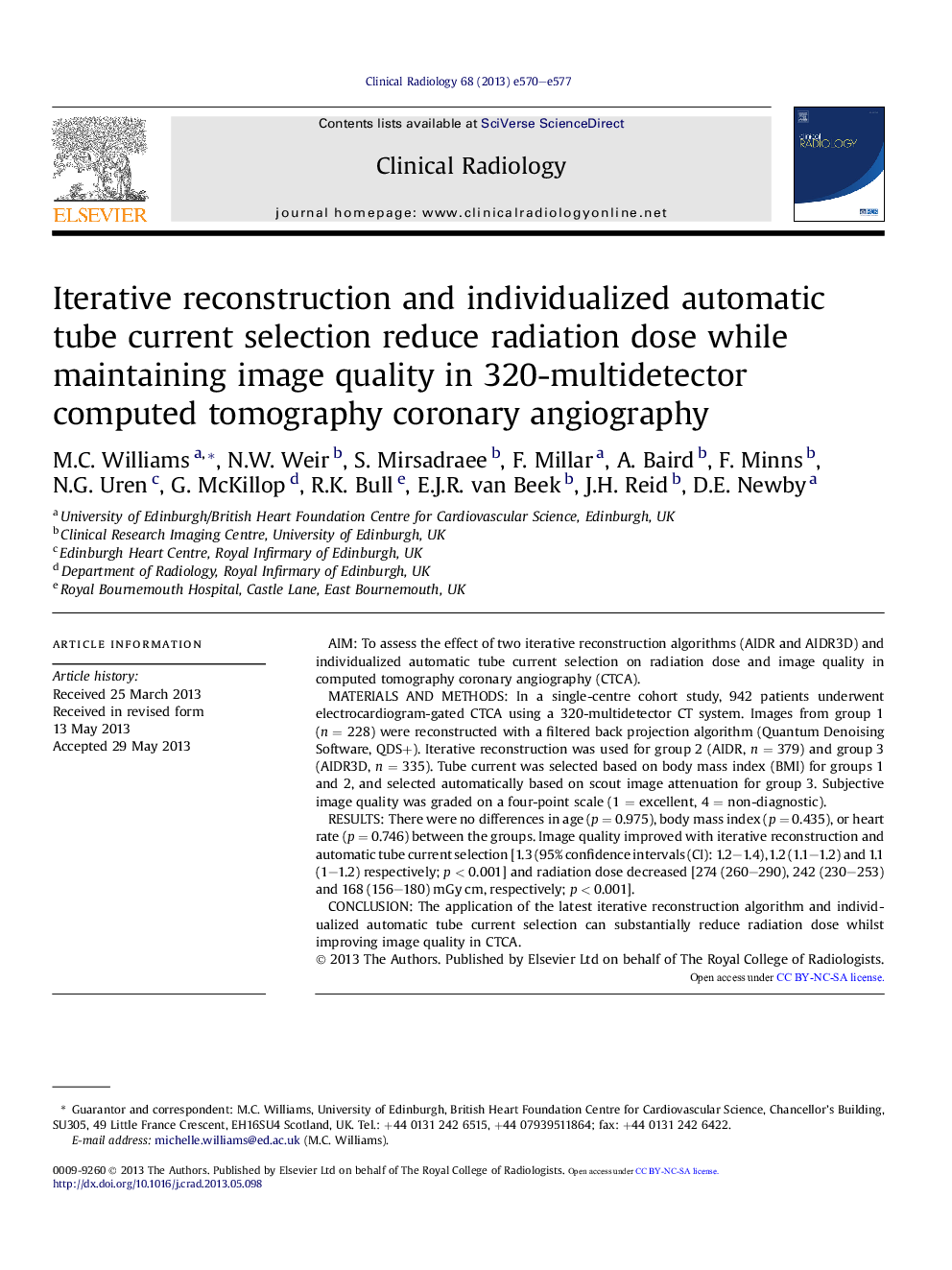| Article ID | Journal | Published Year | Pages | File Type |
|---|---|---|---|---|
| 6191022 | Clinical Radiology | 2013 | 8 Pages |
AimTo assess the effect of two iterative reconstruction algorithms (AIDR and AIDR3D) and individualized automatic tube current selection on radiation dose and image quality in computed tomography coronary angiography (CTCA).Materials and methodsIn a single-centre cohort study, 942 patients underwent electrocardiogram-gated CTCA using a 320-multidetector CT system. Images from group 1 (n = 228) were reconstructed with a filtered back projection algorithm (Quantum Denoising Software, QDS+). Iterative reconstruction was used for group 2 (AIDR, n = 379) and group 3 (AIDR3D, n = 335). Tube current was selected based on body mass index (BMI) for groups 1 and 2, and selected automatically based on scout image attenuation for group 3. Subjective image quality was graded on a four-point scale (1 = excellent, 4 = non-diagnostic).ResultsThere were no differences in age (p = 0.975), body mass index (p = 0.435), or heart rate (p = 0.746) between the groups. Image quality improved with iterative reconstruction and automatic tube current selection [1.3 (95% confidence intervals (CI): 1.2-1.4), 1.2 (1.1-1.2) and 1.1 (1-1.2) respectively; p < 0.001] and radiation dose decreased [274 (260-290), 242 (230-253) and 168 (156-180) mGy cm, respectively; p < 0.001].ConclusionThe application of the latest iterative reconstruction algorithm and individualized automatic tube current selection can substantially reduce radiation dose whilst improving image quality in CTCA.
